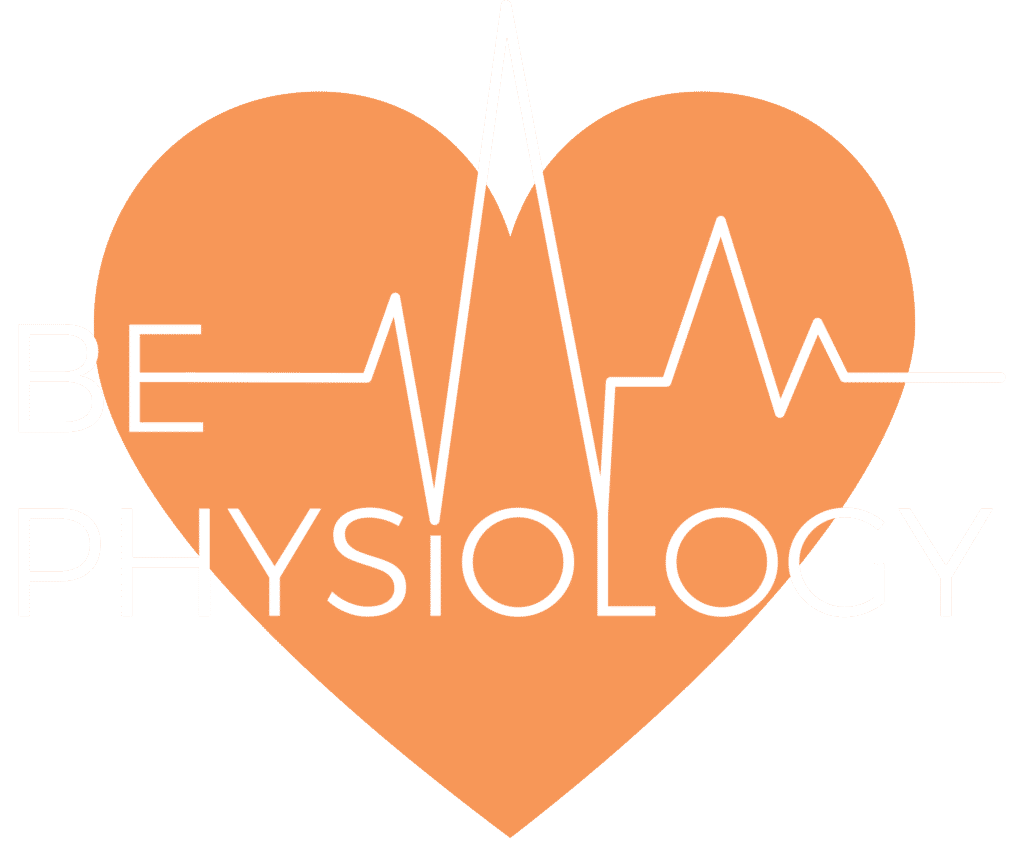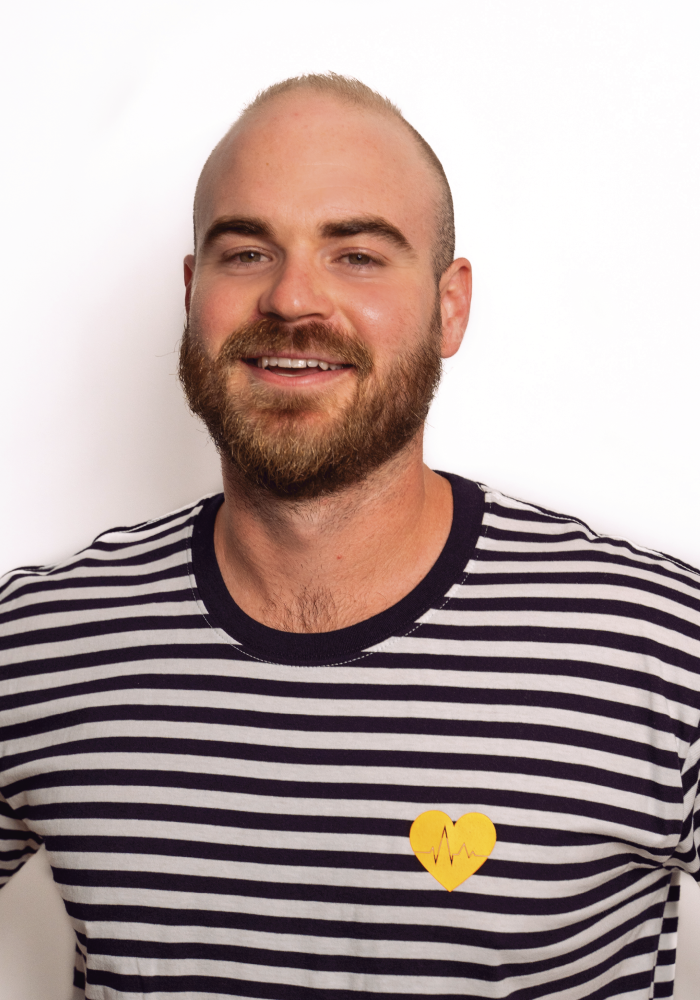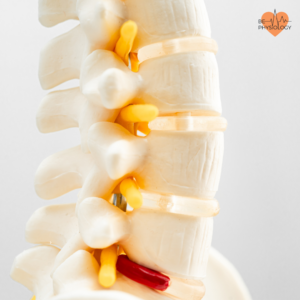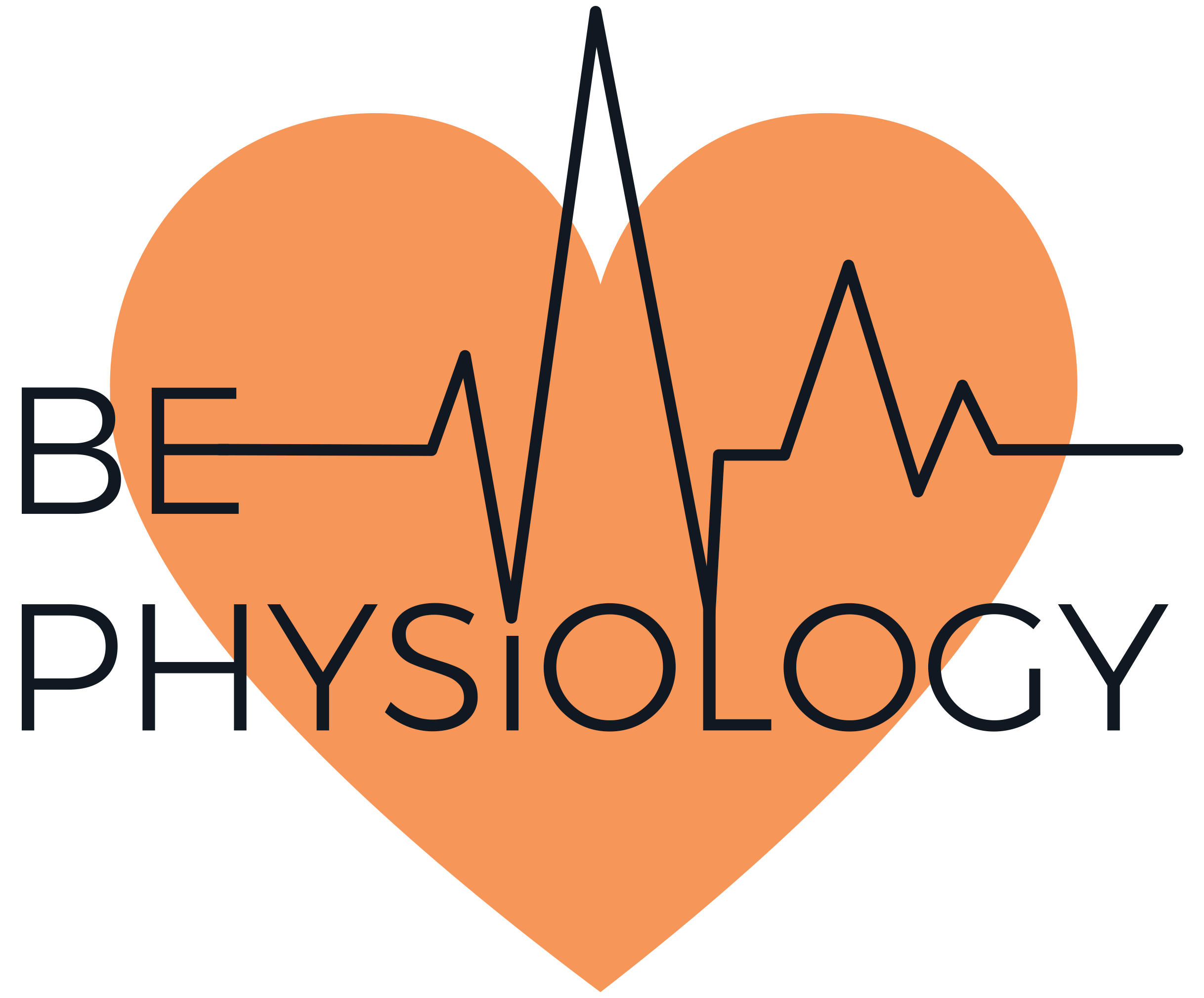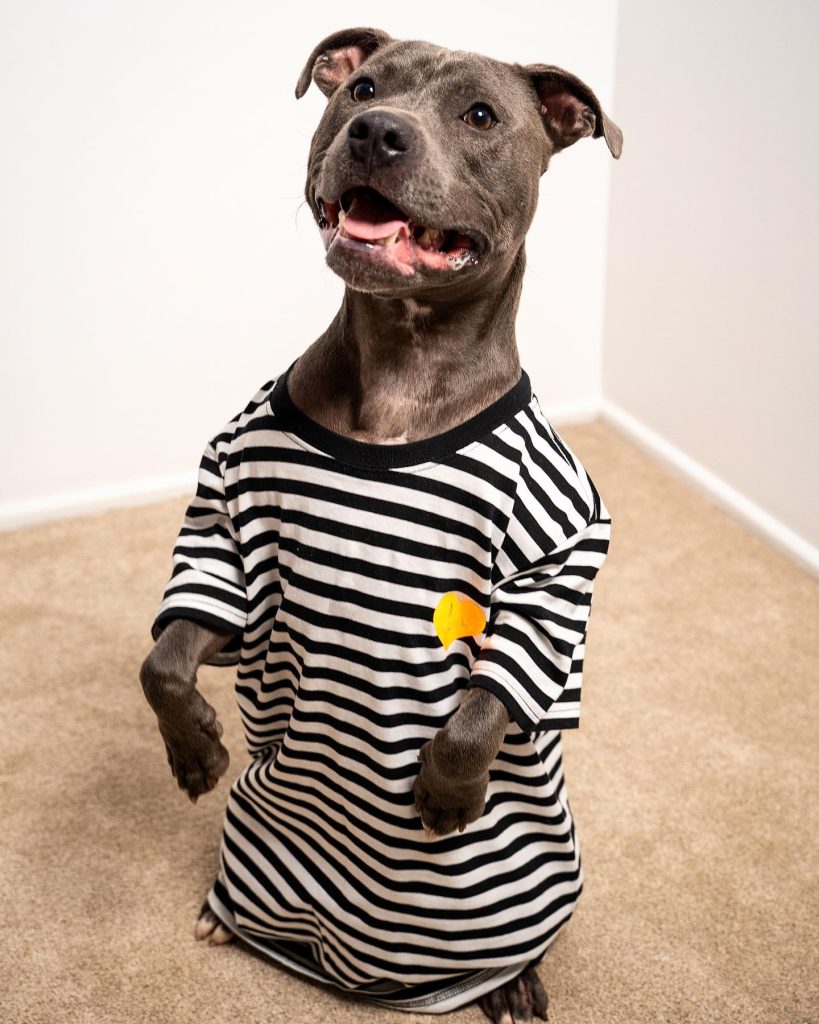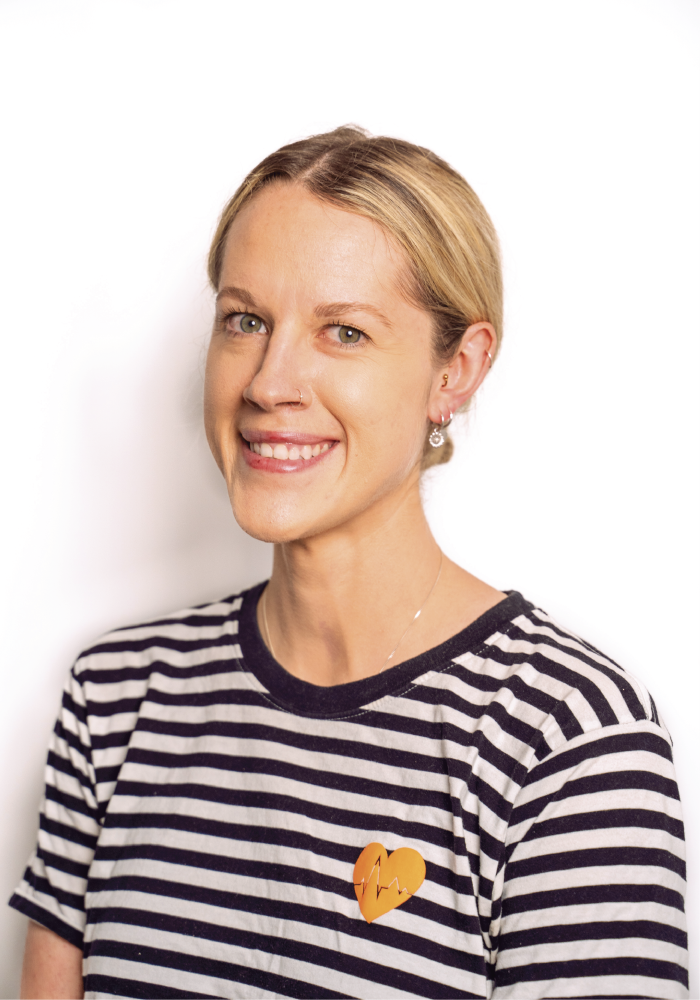Capping off the final episode of series one of UNAWARE the Podcast, we sit down to chat about a stroke.
With 50,000 Australians suffering a stroke every year, it is obviously such an important condition to try and understand a little bit better.
After watching the French film The Butterfly and the Diving Bell, which depicts life after a severe brain stem stroke, we relate our experiences and see if the movie weighs up in comparison.
Get listening and let us know if you agree or disagree with what we discuss!
Transcript
Three, two, one, Hi and welcome to Unaware by Be Physiology. We’re not film critics, we’re not philosophers, and we are not living with a disability. However, we do have a very unique insight into the lives of the people we work with. You’re listening to Be Reel series 1 of the Unaware podcast.
Hello everybody, and welcome back to another episode of Unaware by Be Physiology. My name is AJ, and my name is Harry, and we are Be Physiology. This is series one titled Be Reel, you probably have the gist of it now, but we’re going to explain it to you again anyway because that’s what we do. Harry tell them what we’re talking about. We’re going to be breaking down particular characters and events from new media. Such as tv shows and movies but mainly movies, and we’re going to relate them to our professional lives as exercise physiologists. We’re going to see if things check out if they make sense. Cool, I like that to us and maybe you guys as well because we want you guys to be involved as much as possible. Anything you hear or disagree with, please get involved, like, comment, share, all those things. We’re going to hit you up about at the end of the party as well because you’ll still be here. Still, it’s a change in the season, AJ, and you know what that means? Beanie time, new merch from BP. I got that fluoro heart, and it’s glowing. It looks great! It’s fantastic. You look fantastic, so comfortable, and also very warm. So I’m going to take this off. I think at some point, anyone that’s lived in Brisbane knows how harsh the winters can get. Oh, nice to have a beanie and a long sleeve jumper.
Talk about it being less hot, oh my god. So what are we getting into today AJ well we are going to be covering the movie the diving bell in the butterfly but before we do go into that I want to remind you guys that we’re not experts we don’t no absolutely everything that we’re talking about I mean we’re certainly only going to give you information that we are confident with but by all means if we do say something correct we welcome any feedback but we also we don’t live with a disability so obviously we’re not philosophers we’re not trying to break down the lessons of the world or anything like that but we do have a very unique perspective looking into the lives of the people that we work with as exercise physiologists and take the lessons that we learn to apply to our profession and our everyday life nailed it I love it alright cool well let’s get into the movie so like I said today is the diving bell in the butterfly which I can’t tell you which year it was released I’m going to say it was 2007 as I look after you really good memory. You know, stereographic distance suits your memory, but the diving belt and the butterfly is based on a true story that I didn’t know, as I probably have mentioned for our other movies that were also based on a true story. Still, it’s based on a true story about Jean Dominique Bobby. Good way you have to say like that because it sounds like John Dominic Boobie. So If you’re French and you’re listening, we’ll try our best. I’ve got a little game for you. Cool, does it involve boobies? Because there were a few in this movie now that we’re thinking back any movie worth its weight in salt and being French has to have boobies all right.
I’m going to show you some names, and I’m going to get you to pronounce them for me, OK. Henriette Bernard Butch, next one, Claude Mendobill Vinde Bill. Give me that thing, OK, was that good, Claude? That’s how you say the names, OK. Just because we’re a stickler for the pronunciation of things because we always pronounce things right in this pocket. One thing that people seem to be mentioning a lot is how good we pronounce names. That seems to be the feedback. This is our second international movie, and I’ve been claiming to many people that we’re international film buffs, so we should get the names right. I should get the name right. I apologise in advance and for the past as well. We’re Australian, so get out. We’ll try our best, cool. Well, Harry, what is this movie about? Because I think we mentioned some character names incorrectly correctly, it doesn’t matter, we’re moving on. So the diving bell in the butterfly essentially follows the plot of it’s a true story about a man who suffers a brain stem stroke. We’ll go into that a little bit further later on. What that does is causes a condition called locked-in syndrome and that is paralysis meaning motor, so movement. Sensory paralysis from pretty much everywhere except to the eyes and a vertical movement, so up and down movement of the eyes and eyelids. Definitely eyelids because obviously, he blinks. Can you explain to everybody quickly why that’s the case, why it is now, and how somebody can lose the function of their entire body? Loose sensory innovation of their entire body but not their eyes. Good point, so if you think about it, if you like going through university and you know school, an image that I always see in my head is there’s the floating brain with the cerebellum brain stem and then the spinal cord going down. But usually on many diagrams, two eyes are popping out of the brain with the optic nerves attached to the brain. Essentially what’s that is that saying it’s actually a part of the central nervous system, the eyes are a part of the central nervous system. (Come on in, Britt! Oh wow, thank you, we’re just talking about the central nervous system. What do you get for season two, Brittany? what a lovely lady). So the eyes are part of the central nervous system, and many people say that the eyes are windows into the soul, and a lot of people say that the soul is the brain, so the eyes essentially are a part of the brain. So if you have damage to a different part of a different area of the brain, that doesn’t mean it will affect the optic nerve. The brain stem is inferior or below the eyes itself, so yes, you can affect the brain stem without affecting the eyes. That is the gist of the well, not the gist of the movie scene, essentially. What Harry is going on is that this locked-in syndrome affects the entire body. But still our character Jean, I’m overthinking it now John still has the ability to function using his eyes or, let’s say, communicate. A very difficult way of communication, but we’ll get to that in a second. However, we go for people who don’t know a lot about strokes because he suffered a stroke in the brainstem, as I said before. But there are different types of strokes. It’s worth pointing out if you leave this podcast and watch this movie and you’ll probably figure this out for yourself anyway. We all have a pretty plain understanding of what stroke is. When you think of a stroke victim, you think of it the same way, which is the droopy face. The one-sided function is pretty. It’s no more than pretty; this is as hectic as it gets. I don’t know if there’s a level above this, and they point out in the film where he says basically because of advanced resuscitation techniques, that’s the reason why you’re alive. If this had happened, I don’t know, maybe 50 years prior, there’s no surviving this. But basically, they’ve been able to keep this person alive, not this person Jean. John is a real person too so he’s based on the publication of a book that John. This is a movie about life written by John. In his book in 1999 that got released in 1999 by the same name, diving bell in the butterfly. Hence, it’s just a very interesting way of telling his story, I think. We’ll get into that in a second, but types of strokes such as the haemorrhagic strokes, which are bleeding in the brain. Can we take it back for a second? Can we just say that essentially what a stroke is, regardless of what type it is, it’s an occlusion or a blockage or a loss of blood flow to an area of the brain, so blood is essential for the life of a cell. We’re talking about brain cells. So when the blood flow is occluded, when it’s misdirected for whatever reason, the result of that is either cell damage or cell death. That is essentially what stroke is, that’s the overall definition of a stroke. If you’re breaking down the different types of stroke, haemorrhagic stroke is the bleed. The ischemic stroke is the block, so if something if you have a block, a build-up of plaque buildup, and it blocks the artery to the brain. The cells, the neural tissues need oxygen to survive, so if you stop the blood supply that carries all the oxygen downstream. It’s a wall in the middle of your river that somebody’s just chopped in. It may be built over time. Once the wall is built, no water goes through. There is no more downstream, and there’s nothing here. Hence, it dries up and essentially causes cell damage first. Then that leads to cell death over time. It’s all very time-dependent. That’s why identifying stroke is so time-dependent. If you can get on top of it as quickly as possible, you’re in better shape than someone who doesn’t have the medical treatment as soon as possible. We’ve all heard the acronym FAST, yes, so we should probably touch on FAST that might be a big part of our job. Yes, if you notice drooping on one side of the face, that’s the first sign to look out for. Weakness in the arm on the right side, yep. Where are we now? S is speech, so slow speech, yes, and it is time, so hurry up and do something about it. Call the police saying the three signs. If you see a drop in the face, it’s always good, even if that’s the first thing to call the ambience straight away. Because by the time an ambulance can get to you, that time is so essential. The difference between one minute and two minutes could be huge. I’m not saying that it’s a minute to live or die, but it could be.
Back to the types of strokes. So we had an ischemic stroke, which is the blockage. Then you have a hemorrhagic stroke, where the actual artery wall breaks and blood spills out into the brain tissue, and essentially blood is all through the body. But if it’s not in arteries or veins or outside where it’s supposed to be, it causes damage to cells and death to cells. So a hemorrhagic stroke can be pretty significant because you’re going to bust open an artery wall. Blood’s going to spray into the brain and cause damage. Also, you’re not going to have the oxygen from the normal blood flow downstream again. It’s like it’s been diverted, and everything floods a village somewhere, and then the other village doesn’t get any water. That’s just an analogy. That’s a good analogy, man it’s a good analogy. It’s like you’ve honed that somewhere now that was good. There is also one more which we don’t want to forget. The transient ischemic attack is essentially a warning sign. You can get the same thing as a heart attack. It’s all mini-strokes. Many strokes also could be the name of a rapper. It’s a little stroke, it’s like having that block we were talking about and it only lasts a small while, and then it just lodges speeds through the brake line and can continue and then you might have to go in and remove that blockage or that piece of plaque or whatever. But essentially, you don’t have the full cell death or cell damage downstream. One thing I want to touch on as well is having an aneurysm. Many people are like, “oh, he had an aneurysm”, and yada yada. An aneurysm is essentially like in a blood vessel again. If one part of the wall becomes weak and balloons out, it’s basically like a blood blister outside of a blood vessel. An easy way of describing it, it’s like a big bubble that pops up on the outside right, and it pops quite easily. I wouldn’t say quite quickly, but it certainly is at risk of popping, and it’s very haemorrhage. Because it could be so thin that it’d be stretched out if something blew out the side. It’s now a thin membrane, and it’s easier to break so you can get aneurysms that form behind plaque as well, and when we talk about plaque, we’re talking about cholesterol. That’s one way to build that plaque. If you’ve been told that you’ve had high cholesterol, which I know many people do, it’s not something to think of too lightly. You must make a lifestyle change at that point because the consequences are more dire than just having high cholesterol. That’s not the label we’re too concerned with; it’s the consequences of having high cholesterol and high blood pressure. Exactly right. Two massive indicators of your risk of having a stroke. There are good and bad cholesterol and everything like that. We’re not going to touch on that today, but it’s always a good idea to go and get checked for those levels and see if you’re at risk. Very important.
OK, back to the movie Jean Dominique has a brain stem stroke and essentially, what that means is it affects both sides of the body. The damage is not isolated to one side of the body. As I said before, it pretty much paralyses everything except the eye movement vertically and some eyelid movement. Sorry, we should point out a result and cognitive function because the brain itself isn’t damaged. The brain stem is. But with the brain itself not being damaged, your faculties are all there, so you understand everything that’s happening around you, you just aren’t able to move your body. You can still hear things, you can still hear and see things obviously to a limited degree with the movement of the eyes, but it’s called locked-in syndrome for a reason.
The movie does an excellent job of portraying this as well. In the very first scene, the doctor comes in, and you can see the doctor talking to John and asking Sean to say his name. You hear John speaking, and then the doctor’s responding, “don’t worry about it, it takes a little bit of time to get your speech down”, and it’s weird because I knew that the movie was about stroke, but I’d never heard of locked-in syndrome. At the start, I was like, oh, maybe he’s just speaking really quietly, but that’s not the case here. The idea is that even in the very first scene, John can’t even comprehend that he’s not speaking the way he thinks he is. It is a bit of a side note anyway, not relevant to one thing I noticed as soon as he woke up because the movie pretty much commences. We’ve been talking for ages, and we’re only just talking about the start of the movie. The movie commences with him opening up his eyes in the hospital, and you’re John. So you’re looking up at the doctor, or the orderly, or the nurse, and the screen fades in, fades out. He sees a nurse reaching over, fades in, fades out, sees someone else connecting something up, fades in, fades out. That just reminded me of something that I’ve been told a few times. When people have a stroke or some acquired or traumatic brain injury. Usually, you don’t remember, and you have traumatic amnesia in a way. So a lot of people will not even remember maybe a few days leading up to the stroke. Some people don’t remember two, three months after having the stroke. Then you get filled in later on by your family. it’s like you’re acting a little bit funny there for a while. The mind just gaps and memories are often something that’s affected as well as speech and swallowing. Just from memory, this movie made me think about that a little bit more. I hadn’t really had those conversations with my clients before in terms of the memory loss, but then I started asking those questions because I’m nosy. It’s pretty interesting to hear about people. I had one client tell me that they actually remember having the stroke and then there’s just this 40 day gap of absolutely nothing. Which is crazy because they’re in and out of consciousness I believe. Not everybody but she is as far as she’s aware. I was in and out of consciousness during that time, but still the 40 day gap. So that’s significant. Absolutely and it would be terrifying. I mean a long time if you imagine, if you were out for six days right. Let’s just throw a number at six days. Imagine, if you were just out for six days, the Broncos could lose two games of football in 16 days with the right schedule. Very possible but just that amount of times, what happened? If you go out at night, you can’t remember six hours. That’s my worst fear, horrible. Exactly because I know what I’ve done, but I don’t. It’s just nothing’s good has happened. That’d be terrifying to lose memory and lose speech and swallowing. Jean has aphasia and dysphagia, so one’s speech swelling one’s speech, and he’s lost the ability to form words and use his tongue to create sounds, use his voice box or project air out of his lungs properly to create sounds. Also, he can’t control his tongue to swallow, which is huge for moving into self-feeding and talking to people. I hadn’t heard a speech therapist all that much I mean, obviously I’d heard a speech therapist before, but I didn’t really know how often they were used, and they’re a big part of rehabilitation for a lot of interesting intellectual strokes. Massively, your tongue is not just about speaking, swallowing and eating. it becomes quite hard, I think actually, he doesn’t I don’t think at any point during the movie does he eat for himself? They talk about getting to a point where he might be able to. I don’t think at any point during the film he eats for himself. Remember that very first scene? The same thing a few minutes in. There’s a doctor that comes in and says “oh you’re awake now and you’ll be fine” and you’re like if I’m reading this correctly, what do you interpret as fine? It’s an overly optimistic doctor and I’ve heard stuff like that before from people. He also says there’s some line where he says, “think of me as your friend,” and John’s internal monologue, which the audience has heard, says “just be a doctor”. Exactly so, we don’t have a few friends, which if you just told me that I was going to be fine when I couldn’t move my body or sense anything happening at all, that wouldn’t be. You gotta put it differently than that, surely. Yes, you don’t say you know all the negatives, but you don’t just come out and say blatant lies.
Don’t worry about it. That new neurosurgeon comes and says “think of me as a friend”. He’s giving the spiel he’s saying, “I’ll say the things that other people don’t want to say, but we’re friends so I’ll say it to you anyway”. He’s just doing this monologue pretty much because John can’t talk back.
I noticed that I’ve heard of that stereotype before of this egotistical, enter the neuroscientist that comes in and kicks down the door and just says a few words and they kind of live on this level of their own. I always thought that was a little bit stereotypical and then in the movie, I was like, oh there it is right in front of me. What neuroscientists do is obviously very important. I’m not trying to poo-poo that whole profession. Extremely smart people. But you definitely know some stuff out there saying that they struggle with a bit of that bedside manner, so get it together, neurosurgeons. I hope you like and subscribe!
I want to talk about speech therapists and how they’re involved to some extent. I’m going to talk about physiotherapists as well because the two allied health professionals you see or are involved with Jeans rehabilitation are speechy in the film. The physio now will say right off the bat that in this particular case as an EP, we have no role to play if we saw John, we wouldn’t have a role to play, we certainly have a role to play in stroke. Still, if all motor and sensory function is gone, I guess we’re out of a job there. I think that’s pretty fair you know until there’s movement we can’t really do our job well our job is to work on the body and one thing that is good about what we do is that any benefit that we’re ever able to achieve with a client the client has had to accomplish for themselves because it’s intrinsic it’s their body like they’ve done the worst sport of the muscle you can’t build muscle mass by just pushing having a remote. Having someone else do it for you, you can certainly build function to some extent. There are reasons to move somebody passively, but overall, improving muscle function or muscle mass comes with muscle work. Innovation fires the muscle to contract and that is a lot of what we do in stroke. I guess from a rehabilitation standpoint we try and rebuild the body so that it can return to normal function or as close to normal function as you’re going to get post damage to the brain or the central nervous system. I noticed as well I think there was something mentioned in the movie.
Have you ever heard of people’s characteristics to character changes or characteristics? But I always hear my clients say that they get told first that that’s the case themselves. I’m sure I’ve had clients that notice it themselves anyway but they might feel. It’s always reported to me as if it’s a little bit less significant than saying, “ oh my wife told me that I’m really different in this regard now. What my husband told me, whatever it may be. I’ve definitely heard before that I’ve talked to my family and they said that I get really frustrated really quickly now or I’m just really blasé about everything now. Where that’s just a big character jump so and where we come in we’re always there after the fact so we don’t know that person before him we only know the person that’s in front of us. So it’s always interesting to think about what you have been. What would you have been like if I met you before the injury? It’s funny because I see a lot of clients as well that recover quite well from the stroke which I don’t know if we’ve touched on yet. But stroke rehabilitation, it’s not the be all and end all. Like I said, there’s the difference between cell death and cell damage you can recover from. Somebody may have a stroke and then return to completely normal function or to a point where if you walk past them on the street you certainly would have no idea that that person is a stroke victim. A lot of the clients that we see are not necessarily through stroke alone but aneurysm brain injury whatever it may be, you meet them, and you think what if I saw you on the street? I would have no idea. They’ll tell you they noticed a huge difference but you would never notice a huge difference having met them after the fact it’s such a massive array brain injury can be that’s why it’s interesting for us to work with is because it varies so much it varies it literally could be the goals for someone can be so different just like so many other neurological conditions. Same name of the condition, I have had a stroke so different in the presentation in front of you so it’s interesting for us to kind of work on that stuff so going back to the movie he’s getting a hands and his feet stretched right in the hospital started this point and then I went away from it with my own words yeah can you explain what a physio’s role is we spoke about a speech in terms of swallowing tug movement and that’s the foundation of where they begin I guess but a physio well if a physio essentially will take over the duties of manual manipulation of the body so whether it be massage or stretching or pressure pointing or you know just lengthening or shortening muscles by actually touching the person that’s a big difference between us and physios we don’t you know we will stretch someone you know sometimes if that’s a necessary thing but a lot of the time in our sessions the person’s doing all the work as you said before in a physio and in this movie the physios are stretching out the digits or the hands the fingers the feet and the toes to stop contracture or that tightening up of the fists right so explain from a gross standpoint as in g-r-o-s-s I don’t know any spell grace thank you. What would happen if you were not utilizing a physiotherapist after taking the example of John if there wasn’t a physio involved and there was no physical manipulation in that from that standpoint what happens to john’s body well this is all speculation because I’m not a physio and I haven’t worked in hospital but if you’re not you know continually maintaining someone’s body it’s going to cause dysfunction down the track so if those hands do fully by stretching often you lengthen the you know the muscle fibres and what that does is because the body wants to continually shorten them until they’re so short you can’t open your fists anymore so what you’re doing is just every day not allowing that process to take place because if you do get a closed fist and we’ve talked about this before in other in other podcasts you know you can get rot underneath the skin and then that can cause a lot of different issues down the path down the track same thing with the feet, you’ll never be able to really they’ll curl right up and then what’s the chance of you walking again you know it’s just become that more that much more difficult to get back up on your feet so if you don’t have a physio there you’re much more likely prone to physical dysfunction down the track. well another rehabilitation tool that they use is they also use a tilt table which I first saw on prac where and it was basically being used I think for the most part obviously with number until table is basically you get strapped in and then it tilts that’s where they get the name from which allows someone to work in an upright position so somebody isn’t able to I suppose adequately control their lower limbs or their posture to a point of standing support their own weight a tilt table it then becomes relevant so it might be for bone loading just to get a little bit of weight through the legs because you’re trying to avoid things like osteoporosis they don’t really say specifically why they have john in a tilt table in the movie but I would say it’s probably for those things bone loading circulation because circulation has a lot of different things like your skin integrity after a while can get worse and worse and pretty much you can get sores very easily if you don’t have sensation you can get bedsores and we’ve talked about bedsores before where and they can really just knock people out essentially and also just you know working with a lot of people who have spinal cord injuries or paralysis having someone standing again after not standing for a while it’s a huge mental but benefit huge you can see it in their faces straight away you know it’s just you don’t know what it’s like to be at everyone’s navel height all the time unless you’re there in that you know using that chair every day so just getting up to eye height with someone else is a huge mental benefit well maybe I’ll start using a tilt table to give me an extra that’s what I do you need a big tilt table buddy Mr short stack over here actually you mentioned skin integrity which has taken my mind slightly but do you remember there’s a scene in this film where John’s shaving his father’s face and they throw the sound effects in it has nothing to do with what we’re talking about in the podcast but it is one of the worst movie scenes I’ve ever watched in my life just an account of it was listening to somebody scrape a chalkboard it hurt me that much but I couldn’t just look away you got to I remember thinking sharpen that razor up it was like he then he stops shaving his face and then he goes over to the butter tray and gets some butter and spreads it on toast I’m like that sounds about right you know that’s horrible he didn’t but I wouldn’t be surprised so the oh I’ve actually got another thing you remember we sewed the eye shut that was pretty crazy that was pretty crazy and that happens early into the film as well again we don’t really know about timeline there but they say that it’s to avoid the eye becoming septic well it was definitely some something to do with the irritation of that eye and then that causing problems down the track so the shot of that you remember looking out from the windows of Jean’s soul and then you could see your eyelid getting the pin needle through the bottom through the top and then stitched through I wonder who did that it was horrific it’s also 50 of what jean has left at this point with respect to his well I mean excluding his cognitive capacity but they take that away which is pretty crazy and we haven’t even spoken about the fact that a big part of this film like I said Harry or like Harry said it’s based on a true story it’s actually based off a book that the real Jean who’s also named John wrote now how did he do that if he’s not able to speak and he’s not able to so there’s this whole process which actually does make up so much of the film which is him learning to communicate using a blinking modality I don’t know what the word would be but they go through the most common letters that the alphabet John will blink when you hit the letter and somebody will scribe. They go through the alphabet in the most common letters. So it’s in French so it’s something like a e if I could speak French I’d love to recite it too.
Does that mean something to do with going shopping? is it in bed tonight? Okay thank you, I think it actually does translate to will you sleep with me tonight? Oh yeah if you’re French or just looking for a partner, send in such a French song. It’s a good song of course a French song doesn’t get a play in this film I don’t know if there was a point in this film where no no no no no no I don’t know probably like Christine Aguilera there’s a few of them pretty sure pink’s in that oh wow Missy Elliot let’s get back on topic. Wait now let’s talk about Missy Elliot so Missy right. So one thing that happened in the movie as well is that he when the physio I think is the physio because the physio is going over tongue shapes trying to get him to mimic a tongue shape and she brings down a mirror in front of him and the internal monologue of jean says get that mirror away from me I don’t want to look at myself I don’t want to see the person in the mirror pretty much and that’s something I’ve noticed that I you know working in a clinic where there was a lot of people with well everyone had a disability of some description a lot of people did not like there were no mirrors anywhere in this clinic except for portable ones and a lot of people did not like looking into the mirrors. I distinctly remember a lady who had ataxia after having a stroke early on in my career, so very shaky movements and blind in one eye and had one side paraplegia. But had got some movement back on both sides, but very shaky movements. If you go to pick up this mug, it would be everywhere? So let’s just show you how different a stroke would be. I pulled in the mirror because I wanted her to unlock one knee and then at the same time and then switch over to unlock the other knee. It was just something really simple like that brought the mirror in front and it just kind of blew up like someone just threw holy water on her and she was the devil. It was just like getting another one and she’s Hispanic, so I was more expressive.
Anyway, and she just said no, I don’t look at myself, I don’t want to look in the mirror, that’s not me that’s not me. She has the thing and I was thinking wow that’s interesting. So what I did is just tilt the mirror down to look at her legs but it’s just something and I’ve noticed other people say something. I should also mention the same thing so I don’t want to look at myself in the mirror. if I have to I will but I don’t want to look at myself in the mirror. Well there is obviously a big separation between how some people view their injury which is pre-injury post injury and that’s like it’s a defining point in their life. There’s a there’s a theme in the film which is Jean’s there’s this very expressive grief in terms of his inability to fulfill like his familial role like his occupational role he is not portrayed like it’s a true story but prior to his injury he looks like he lives like a pretty enjoyable life and he has kids I think he has a wife I don’t know if it’s an ex-wife it’s hard to get the relationship down he’s got a he’s got a mistress and a wife or something like that I don’t know but I suppose that’s another side of it where it’s hard to well it might be hard to fathom what it was that you were doing before your injury it doesn’t always work that way I actually find that a lot of my clients get this really. it’s like they have a really nice way of reflecting on their lives beforehand and then almost using it as a tool to take another step forward and how they live the rest of their life so it certainly does it’s not all bad there are people that have an injury and then they take accountability for their health I guess which is the benefit of things good point actually really good point. It would be just looking into if you and I woke up in the morning and looked in the mirror. There’s just someone else staring back at them. Just because I feel like I didn’t make this clear enough. Still, I certainly wasn’t suggesting that if you have a stroke you’re no longer able to undertake your family role or your occupational role. In this context life gets a bit hard, good saving, did I say that properly? You said that I thought it was fine man. All right well then back to you. I can’t remember what I was saying but look in the mirror like it’s someone else looking back at you and that’s you know it’s terrifying it’ll be terrifying. Again I’m using that word again but you’re thinking back like that was my life. My life was going so well and then this happened. This catastrophic injury happened and now I have to live my life like this. You can definitely empathize with people why that would be an issue for them and certainly it would probably be for me as well if it happened. It would be a massive I was going to say learning curve but life curve.
One thing that happened in the movie is there’s a scene where he’s on the tilt table and a fly lands on Sean’s nose and he in his internal monologue he’s thinking get this fly off my nose get this fly off my nose and he happens to shift his head to the right and the fly flies away and you know the physio and the speech pathologist see it and go oh my god you’re getting moving back that’s great you know it’s a little victory and everyone’s you know excited and then he’s going through this function or this process with the physio that we use a lot and that the that this process is complete assistance to heavy resistance so as long as you have complete assistance wait so what so you have to completely assist that movement I’m a complete assistant to then transitioning to heaven because you said complete resistance you’re just holding jean’s head against the tilt tape you’re not doing it properly stop blowing all this stuff with my camo pants and that’s not what we do guys just in case this is your first time you’re tuning in I don’t even own a whistle anymore that part of my life is gone so from complete assistance like helping someone completely say let’s just break it down it’s a really easy example someone sitting down on a chair and lifting their leg up right so at the start of their injury say they’ve lost the ability to do that they still have the ability to activate the muscle barely but it’s just so the signal’s either very weak or the contractions too weak to lift the weight of the leg so you’ve just got to start from complete assistance or assisting them to do that movement work them through that continually try and get them to target and making sure they’re turning on that muscle while you’re moving the leg and assisting and just doing that more and more and more and then assisting less and less and less over time because with neuro rehab it’s just volume and quality of the movement if you can get that meaningful movement where they’re turning on the muscle and you’re lifting a leg at the same time you’re doing again and again and again that’s meaningful and you can build their blocks that you’re going to build on until you get to the point where oh my god they can now sit there you know however long this will take and lift their leg again now what you’re thinking is okay it’s great they can lift their leg but that’s about it so now you’ve got to start adding resistance to that movement so you put a little ankle weight on them or you apply weight with your hands they’ve got to try and kick through your hands now you’re focusing on building the muscle and that’s something that happens in the movie with the with the physio with the head movement just moving the head to the right and the internal monologue is something that I’ve heard before as well where he says oh but you’re doing it all you know that’s it’s just something I’ve definitely heard before when you’re in that initial stage where you’re just saying you’re just trying to get someone on focusing on turning something on and you’re doing that complete assistance movement just to try and help the brain remap and think okay when I turn this muscle on that leg moves you know muscle on leg moves muscle and just trying to remap because there might be damage and it is obviously damage in the brain or that signal going down and you have to give it another pathway and the brain is so malleable it can learn and find different ways to turn on different signals cool well said I wonder if they talk about kids in the neuroplasticity that kids have I wonder then if a kid is more likely I mean you don’t really see kids suffering strokes all the time but I wonder if they’re more likely than to develop a different neural pathway after an injury. That makes complete sense to me if that is true I would not be surprised and it’s really easy to learn things as a kid is or even relearn things as a kid because you don’t have this you don’t have anything in your head already trying to figure out you’re not trying to remember the old way of doing something you’re just trying to do something for the first time so you’re not fighting this old habit that you had a habit or whatever you want to call it and trying to learn something new you’re just trying to learn something new so I usually find with kids that they learn a lot faster they definitely do it’s like a thing in general and I’m the opposite of the spectrum if you ever watch me play golf you’ll be like unlock yourself buddy, not yet buddy. You and I like hitting the green be right but the body or my mind or an adult’s mind is I know something that is similar so I’m going to try and lock into this way of doing things and you have to be malleable anyway. We’re getting off topic anyway.
Did you have anything else that you really wanted to bring up about the movie? Maybe how the diving bell was an analogy for his paralysis? That was pretty cool. That was cool so you know there’s plenty of things we are missing from this movie I guess we’re talking more about our experiences and it’s very hard for us to relate and we didn’t really obviously we didn’t watch this movie no know this movie before we were going to do it we didn’t know we’re walking into locked-in syndrome so we didn’t know that was going to happen so it’s hard for us to relate exactly to the movie because as a said in this situation we’re really not we’re not doing a whole lot like in this story that’s told but you know the diving bell and the butterfly so the diving bell you know is like an old diving suit where you’re just kind of sinking down to the bottom of the ocean pretty much with an oxygen tube attached to you and you’re just in this you know suit pretty much and that’s a really interesting and obviously poetic way of describing his paralysis he’s locked in his own body it feels like he’s in a diving belt sinking to the bottom of the ocean and also you know there was also that the butterfly was an analogy for who he used to be because his partner always used to meet they call him her butterfly there’s also a reference to his kids being the butterfly really at some point at the very end I think the book itself how at the start of the book it always gives that little thing this is who I’ve written this for yes I think it’s kids and then it says something about his kids my butterflies which is cute that makes more sense actually I mean I don’t know I there was definitely two sides to the analogy within the film itself I don’t think it just had to do with his kids one more thing I actually wanted to pick up a pick on before we left is there’s a scene in the movie where these two handymen come into the um hospital and they walk in and they’re like oh knock on the door and there’s Sean just in his bed one eye open just looking at him because he can’t communicate and then saying hey did you order this phone you know this phone is connected is it you know throwing this phone in and he’s just sitting there and they’re like hey buddy I think he does try blinking I think he’s trying to communicate somehow and then the speech pathologist comes through and says you know who let you in you should have waited for someone else to come in here because you know he needs to be able to communicate he needs me he me here to communicate and then straight away the you know the questions that the handymen are asking are for jean but they’re asking the speech therapist and you know and they’re not they don’t seem like the nicest people in the world the two they certainly make the light of the situation you know 100 which I suppose there’s not really the situation when you make life it’s funny because john ends up laughing at the joke that he makes about john but I think I know where you’re going with this. It’s when pretty much what the speech therapist says doesn’t speak like he’s not in the room so they’ve just directed everything towards her and there’s John. One of the best bits of advice that I have ever gotten I think luckily I got it before the movie itself but you certainly build a lot more rapport with your clients if you speak of them as if you’re speaking to them. I might be if a support worker asked how let’s call it John went in his session today and John’s sitting right there you won’t just be like well he did pretty well and blah blah you’d be like well John we did what did we do today we did blah blah blah and you try and engage them as much as possible you get you get a better response that way. Talk to that person if someone needs to chime in to fill in the gaps well but always address the person you’re talking to even if they do have some kind of language barrier or whatever. You don’t have to keep your eyes on the person connected with that person, you don’t have to redirect what you’re doing if it makes you feel uncomfortable. It’s something you need to learn to do a bit more. If someone needs to come in and help you out with communication, you know surely someone will. If you need to direct somewhere else you can do that, but it’s always good practice to engage with the person you’re talking to even if they have communication barriers.
I just know I just want to really reiterate that there are so many different types of stroke you know there’s the lady I was talking about before who has the very shaky movement and on both sides of the body there’s another kind of mind who has you know weakness you know say 75 percent weakness in the arm 25 percent weakness in the leg again I’m being very global or general and speech is fine memory is fine I’ve got another client who has really good physical function but still has slurred speech and memory issues I have another client who doesn’t seem like they have any symptoms besides sometimes they say to you memory is not exactly what it used to be but they definitely seem like they’re going all right and then you’ve got jean who’s got locked in syndrome which is just a massive you know on the other end of the spectrum of stroke but they’re all stroke victims they’re all stroke victims so you know if anything it’s good to know that stroke is variable and no two people are the same and usually we’ll talk about how well the disability is represented in the film again this is such a high level of strike that it’s hard for us to speak from personal experience but I even still just with our knowledge of strike itself and how the body may be affected I actually think that it was well acted. It was an excellent job even with the facial expression, and I thought it was a very good movie. If we’re putting down our rating right now I think it was you know an I don’t know a b plus type movie. That’s high in terms of our rating. I don’t see anything above a b minus we’re sticklers, but it really showed a unique but extreme perspective and as long as you understand that you’re good, you’d figure it out straight away again like I said you wouldn’t. I mean if you showed the film and you weren’t told at any point that that was just a stroke, you’d be like, what is what’s going on here? What’s this going to go because it’s not what you know of is a stroke. I had no idea strokes got to this point not that I’m the encyclopedia of all things medical but it was interesting. It was a good film, well-acted. It’s psychopathy in French for an encyclopedia. I think you might be quoting how about your mother. It’s like a liberal that’s Italian. On that note, all right, thank you very much for joining us again. You guys have been great. We appreciate your feedback because we know what’s coming up, I’ve been AJ, and I’m still Harry. We are Be Physiology. Have a good night, and you’re listening to Be Reel series one of the Unaware podcast. I feel like I’m more aware now.
